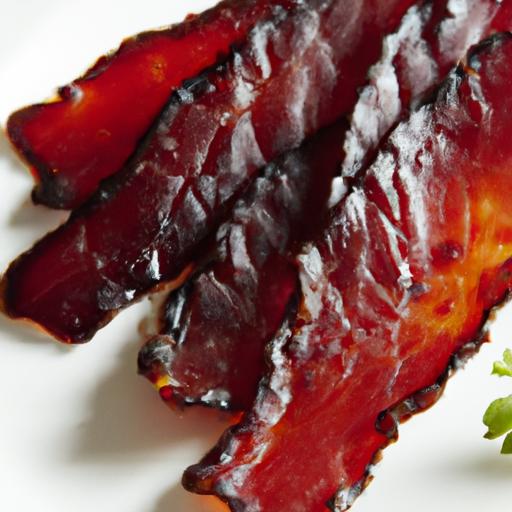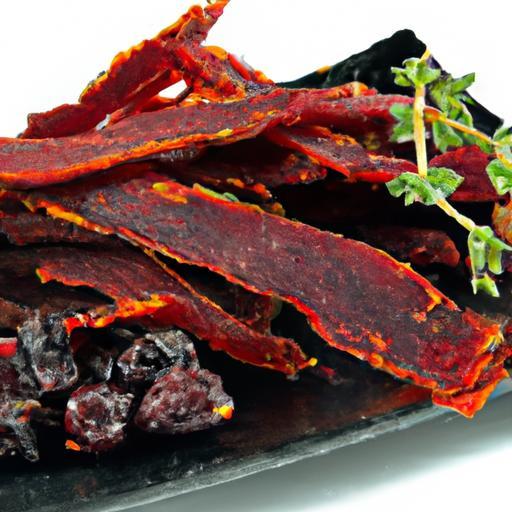There’s a unique satisfaction in watching tender strips of meat transform into chewy, flavorful jerky-until suddenly, the process grinds to a halt. You’ve seasoned your cuts, set the drying rack just right, and yet the hours stretch on with little sign of progress. Why is your jerky taking forever to dry? Behind this seemingly simple task lies a web of factors-from humidity levels to meat thickness-that can turn your drying journey into a slow, puzzling wait. Join us as we unravel the mystery behind sluggish jerky drying, offering insights that will have your next batch perfectly ready in no time.
Why Is My Jerky Taking Forever to Dry? This common question often sends home jerky makers into a mix of frustration and curiosity. Understanding the underlying science behind drying times can transform your jerky experience from a prolonged guessing game into a rewarding culinary adventure. In this section, we’ll explore how factors like moisture content, meat thickness, temperature, and airflow influence drying speed, while equipping you with practical solutions to optimize your process and overcome common pitfalls.
Prep and Cook Time
- Preparation: 20 minutes (slicing and marinating)
- Drying Time: 4 to 12 hours depending on thickness and drying method
- Total Time: Approximately 5 to 12.5 hours
Yield
Yields approximately 6 servings of delicious homemade jerky
Difficulty Level
Medium – Ideal for culinary enthusiasts with some patience and a keen eye on drying parameters
Ingredients
- 2 lbs lean beef (top round or eye of round), thinly sliced
- ½ cup soy sauce (use low sodium for a milder saltiness)
- 2 tbsp Worcestershire sauce
- 1 tbsp brown sugar
- 1 tsp smoked paprika
- 1 tsp garlic powder
- 1 tsp onion powder
- 1 tsp black pepper
- Optional: ½ tsp red pepper flakes for heat
Instructions
- Prepare the meat: For even drying, slice your beef against the grain to about ⅛ to ¼ inch thickness. Aim for consistent thickness to avoid uneven drying times.
- Marinate: Combine soy sauce, Worcestershire sauce, brown sugar, smoked paprika, garlic powder, onion powder, black pepper, and red pepper flakes in a bowl. Place meat slices in marinade and refrigerate for 6-12 hours to ensure flavors penetrate deeply and some moisture is gently drawn out.
- Preheat your dehydrator or oven: Set temperature between 160°F and 175°F (71°C to 79°C). This range balances safety by eliminating bacteria while keeping drying times efficient.
- Arrange meat slices: Place the marinated meat strips in a single layer on dehydrator trays or wire racks. Leave space between pieces for optimal airflow, crucial for even drying.
- Monitor drying progress: Dry jerky for 4 to 12 hours, checking every couple of hours after the 4-hour mark. Thickness and moisture content control drying speed-thicker slices and higher moisture extend drying time.
- Test for doneness: Jerky should feel firm and dry but still bend slightly without breaking. If it snaps, it may be over-dried; if soft or spongy, it needs more time.
- Cool and store: Let jerky cool completely before sealing in airtight containers to preserve freshness.
Tips for Success
- Moisture management: Pat meat dry with paper towels before marinating to speed up drying and reduce drying time variability.
- Thickness uniformity: Use a meat slicer or ask your butcher for evenly cut slices for consistent results.
- Temperature optimization: Maintain a steady heat source and avoid overcrowding trays to enhance airflow-a fan-assisted dehydrator excels here.
- Troubleshooting drying challenges: If jerky remains moist after hours, check if meat slices overlap or if the temperature is too low. Adjust accordingly.
- Storage: Vacuum seal your jerky for long-term preservation or refrigerate to maintain texture.
Serving Suggestions
Serve your jerky as a protein-packed snack on the trail or chopped into salads for a savory crunch. Garnish with freshly cracked black pepper, a sprinkle of smoked paprika, or alongside a tangy mustard dip for an elevated tasting experience. Pair with crisp pickles or cheese for a satisfying charcuterie board addition.

| Nutrient | Per Serving |
|---|---|
| Calories | 190 |
| Protein | 25g |
| Carbohydrates | 3g |
| Fat | 7g |
For more in-depth tips on perfecting jerky at home, check out our Complete Guide to Homemade Jerky Techniques. Also, explore USDA guidelines on safe meat drying practices here.
Q&A
Q&A: Why Is My Jerky Taking Forever to Dry? Unraveling the Mystery
Q1: Why is my jerky still soggy after hours in the dehydrator?
Answer: Patience is key, but if your jerky is stubbornly wet, it could be due to thickness. Thicker slices naturally demand more drying time. Also, excess moisture in the meat or improper airflow in your dehydrator can slow drying significantly.
Q2: Could the type of meat affect drying time?
Answer: Absolutely! Different meats have varying fat and moisture content. Lean cuts like venison dry faster, while fattier meats like pork can hang out longer before they’re ready. Less fat means less chance of lingering moisture.
Q3: How does marinating impact drying speed?
Answer: Marinating adds moisture along with flavor. While delicious, heavily marinated pieces will take longer to dry because the marinade must evaporate before the jerky firms up. Try patting your marinated slices dry before dehydration for faster results.
Q4: Is temperature a factor in drying time?
Answer: Yes, it’s critical. Most jerky dries best between 145°F and 160°F. Lower temps mean slower evaporation, leaving you waiting and wondering. On the flip side, too high a temp risks cooking the meat instead of drying it, so balance is essential.
Q5: Could humidity or environment be slowing the process?
Answer: For sure! Drying jerky is like sunbathing-high humidity days make everything take longer to dry. If your kitchen or dehydrator room is humid, it can drastically extend drying times. Using a dehumidifier or drying on a dry day helps.
Q6: How important is airflow in the drying process?
Answer: Crucial. Good airflow whisking away moisture ensures the jerky dries evenly and efficiently. Blocked vents or overcrowded trays trap steam and slow drying, so space your strips and keep vents clear.
Q7: What are some quick remedies if my jerky is taking ages?
Answer: Slice thinner, reduce marinade moisture, increase temperature slightly (but stay safe!), and ensure proper airflow. Also, check your dehydrator’s fan; a whispering breeze speeds things up.
Q8: When is my jerky actually done?
Answer: Jerky should bend and crack but not snap like a dry twig. It’s leathery, not gummy or wet. If it’s sticky or soft, keep drying. Remember: under-dried jerky can spoil quickly, so it’s better to be patient than rush!
Solving the mystery of slow-drying jerky is all about balance-thickness, marinade, heat, humidity, and airflow. Tweak these variables, and soon you’ll be savoring perfectly dried jerky without the endless wait. Happy drying!
To Conclude
In the end, drying jerky isn’t just a simple waiting game-it’s a delicate dance of temperature, humidity, meat thickness, and patience. Understanding why your jerky is taking forever to dry transforms frustration into mastery, turning each bite into a reward for your attention to detail. So next time your jerky lingers a little longer on the rack, remember: you’re not just drying meat-you’re crafting flavor, texture, and tradition. Embrace the mystery, tweak your process, and watch your jerky journey go from “when will it be ready?” to “worth every minute.” Happy drying!


